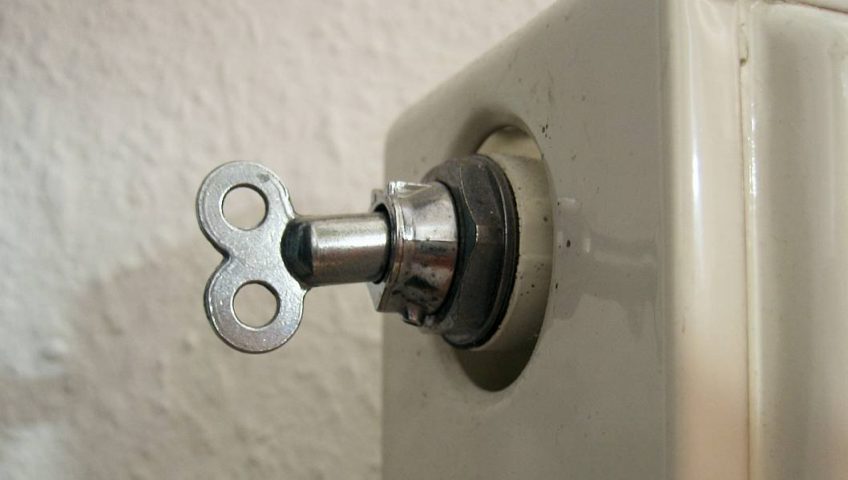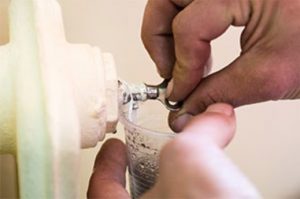
How to bleed a radiator

The last thing you need is for your heating to stop working, especially during the winter season when it is particularly cold. Make sure your radiators are in full working order; if they aren’t producing heat effectively, then there might be some trapped air or gas in the system.
Below is a simple 8-point guide on how to bleed your radiators at home.
What you will need:
- A Radiator Key or flat-headed screwdriver
- A cloth, towel or even a washing up bowl
- Spare time
- Patience
Method:
 Turn on your heating
Turn on your heating
Even if you have already noticed a change in temperature in the house, or it being colder in some rooms more than others, it’s a good idea to turn on your heating again. This will allow you to check each radiator individually before you bleed them.- Check your radiators for cold spots
What you’re checking for is cold spots, or a lack of heat all together. This is an indication that there might be a blockage of air or gas which is stopping the circulation of water around the system. - Switch off heating
Once you have identified which radiators need attention, it’s time to turn off the heating and let them cool so you don’t burn yourself. - Set up to catch drips
Find the valve at one end of the first radiator you want to bleed. Place a cloth, towel or washing up bowl underneath to catch any drips that come out in the process. - Start letting the air out
Take the radiator key or flat-headed screwdriver (if in doubt take a picture and ask at your local hardware shop). Place into the valve and turn anti-clockwise. There should be a slight hiss. - Stop the drips
After the hissing, which is a release of air or gas from the system, there is bound to be water leaking out of the valve. As much as possible try and stop this from happening by closing the valve again. - Repeat for each radiator
Repeat this simple process for each radiator in the house that needs attention. Remember each time to set up a cloth, towel or bowl first, before opening the valve. - Check pressure gauge
Once you have finished all the radiators you have identified as having problems, you will need to check the pressure gauge on your boiler. If it is low, then you can use the filling loop, which should be a tap or lever. This will boost the pressure back up to acceptable levels.


